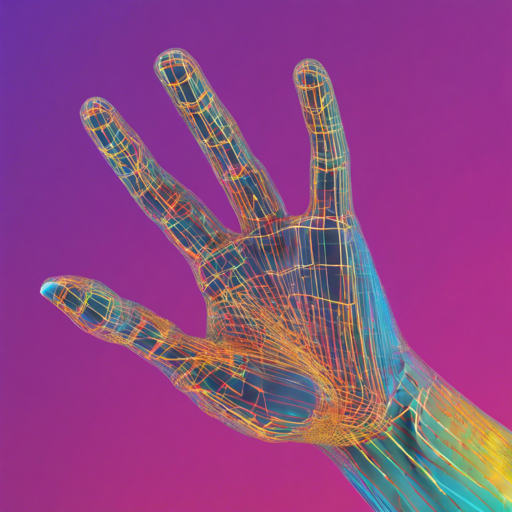Welcome to this comprehensive guide on implementing a TensorFlow-based solution for hand pose estimation using dense 3D regression techniques. We’re diving into the practical steps you’ll need to follow to get started with this project, based on the repository dedicated to this innovative methodology.
Requirements
Before we jump into the implementation, ensure you have the following requirements met:
- Python 2.7
- TensorFlow 1.3
- tfplot (for visualization on TensorFlow summary files)
- Matplotlib version 2.0.2
- Numpy
- OpenCV 2.4 (optional, for CPU visualization)
Data Preparations
The next step involves preparing your data for processing:
- Download the datasets.
- Create soft links for these datasets to
expdata. - Run the command:
python data/$dataset.pyto generate the TFRecord files. More details can be found in theexpdatafolder.
Usage: Running the Model
With your data prepared, you can now utilize the model for hand pose estimation. Here’s a straightforward command to get you started:
bash
python model/hourglass_um_crop_tiny.py --dataset icvl --batch_size 40 --num_stack 2 --fea_num 128 --debug_level 2 --is_train True
In this command:
- dataset: Choose your dataset (e.g.,
icvl,nyu,msra). - batch_size: Adjust how many samples to process at once.
- num_stack: This indicates how many stacked hourglass networks you wish to use.
- fea_num: Set the number of features for the model.
- debug_level: Allows you to control the verbosity of the output.
- is_train: Set to
Truefor training andFalsefor testing.
Understanding the Model: An Analogy
Think of the model as a talented chef (the neural network) creating a complex dish (the hand pose estimation). The chef has various ingredients (the hyperparameters) and receives different cooking methods (training setups) depending on the dish complexity. For every batch of raw ingredients (data), the chef must apply the right techniques over a specified time (number of iterations), lending their experience (training data) to perfect the recipe!
Results and Evaluations
Once you’ve executed the model, the results will provide xyz coordinates in millimeters. The 2D projection method can be traced in the function _xyz2uvd_ found in datautil.py. For comparative results, check out our outputs for different datasets:
- [ICVL Results](./exp/result/icvl.txt)
- [NYU Results](./exp/result/nyu.txt)
- [MSRA15 Results](./exp/result/msra.txt)
For a broader evaluation against other techniques, visit this repository.
Pretrained Models
To facilitate your testing, the following commands can be used to fetch the pretrained models:
bash
cd $ROOT
./expscripts/fetch_icvl_models.sh
./expscripts/fetch_msra_models.sh
./expscripts/fetch_nyu_models.sh
Run the appropriate command to perform testing based on your chosen dataset, modifying the command slightly based on whether you’re testing on ICVL, NYU, or MSRA datasets.
bash
python model/hourglass_um_crop_tiny.py --dataset icvl --batch_size 3 --num_stack 2 --num_fea 128 --debug_level 2 --is_train False
python model/hourglass_um_crop_tiny.py --dataset nyu --batch_size 3 --num_stack 2 --num_fea 128 --debug_level 2 --is_train False
python model/hourglass_um_crop_tiny.py --dataset msra --pid 0 --batch_size 3 --num_stack 2 --num_fea 128 --debug_level 2 --is_train False
Troubleshooting
If you encounter any issues during implementation, here are some common troubleshooting ideas:
- Ensure all dependencies are correctly installed and working. Mismatched versions can often lead to errors.
- Always double-check your dataset paths—incorrect paths lead to data not found errors.
- Make sure your Python script is being executed in the correct directory where your project files are located.
- If you run into memory issues, try reducing the
batch_sizeparameter.
For more insights, updates, or to collaborate on AI development projects, stay connected with fxis.ai.
Conclusion
At fxis.ai, we believe that such advancements are crucial for the future of AI, as they enable more comprehensive and effective solutions. Our team is continually exploring new methodologies to push the envelope in artificial intelligence, ensuring that our clients benefit from the latest technological innovations.

